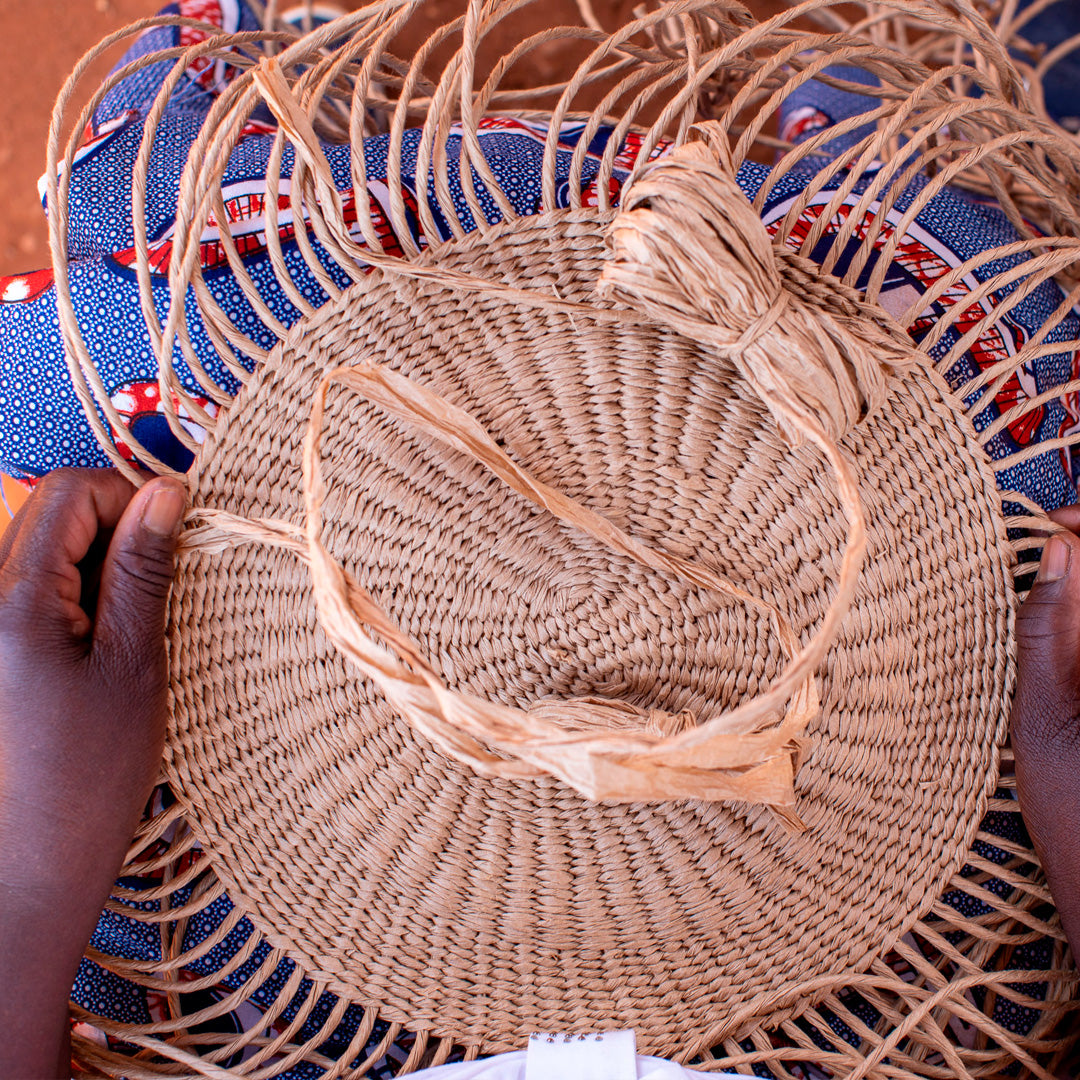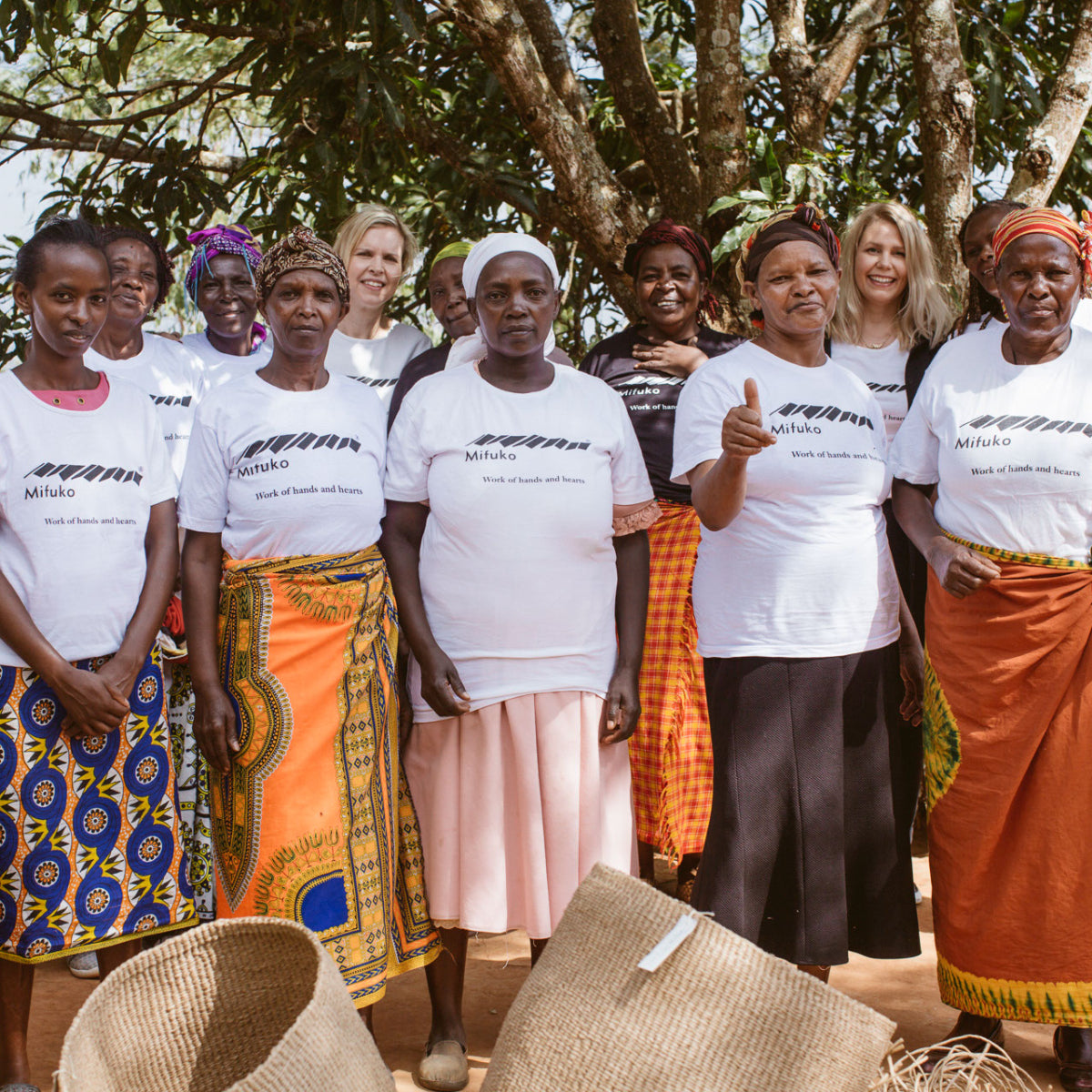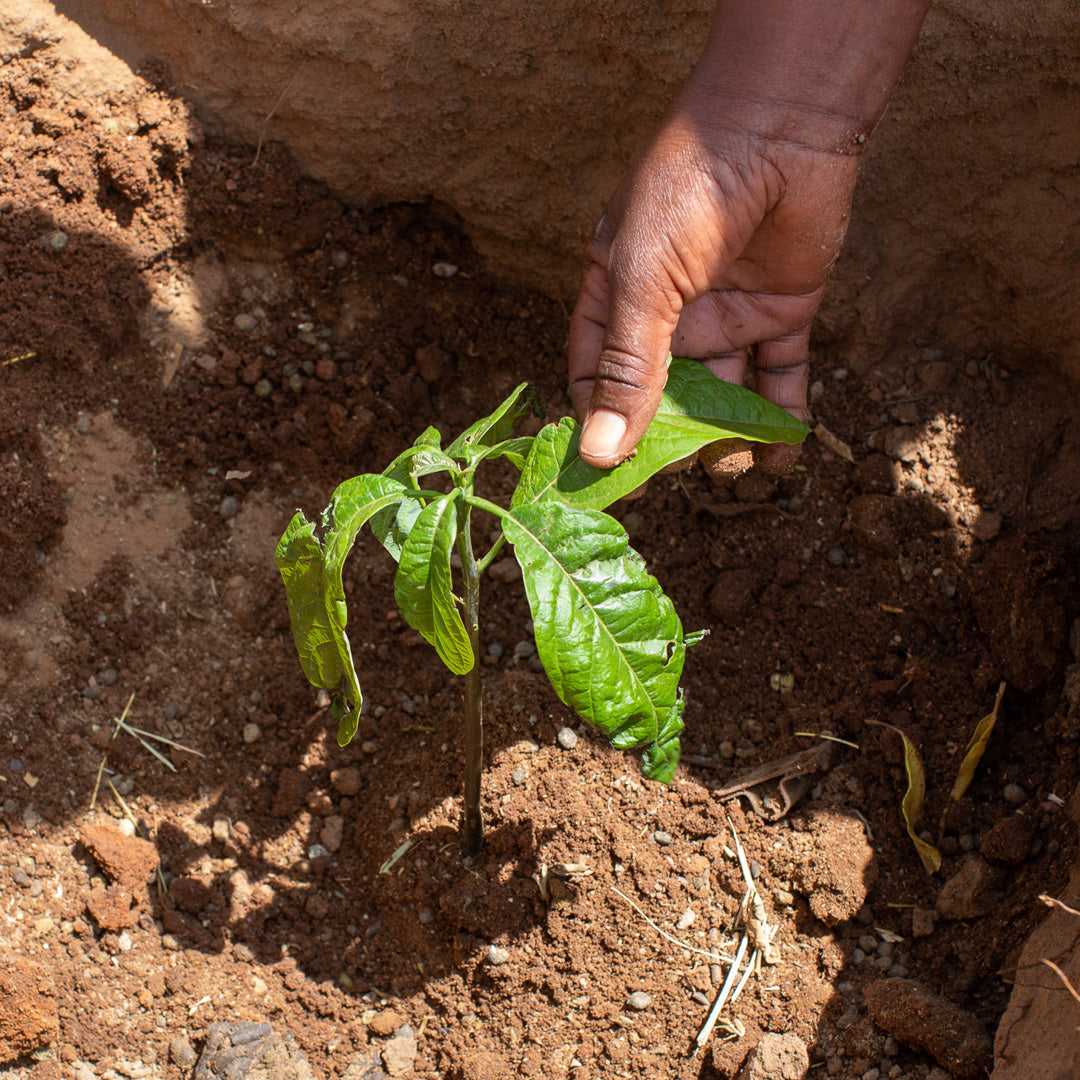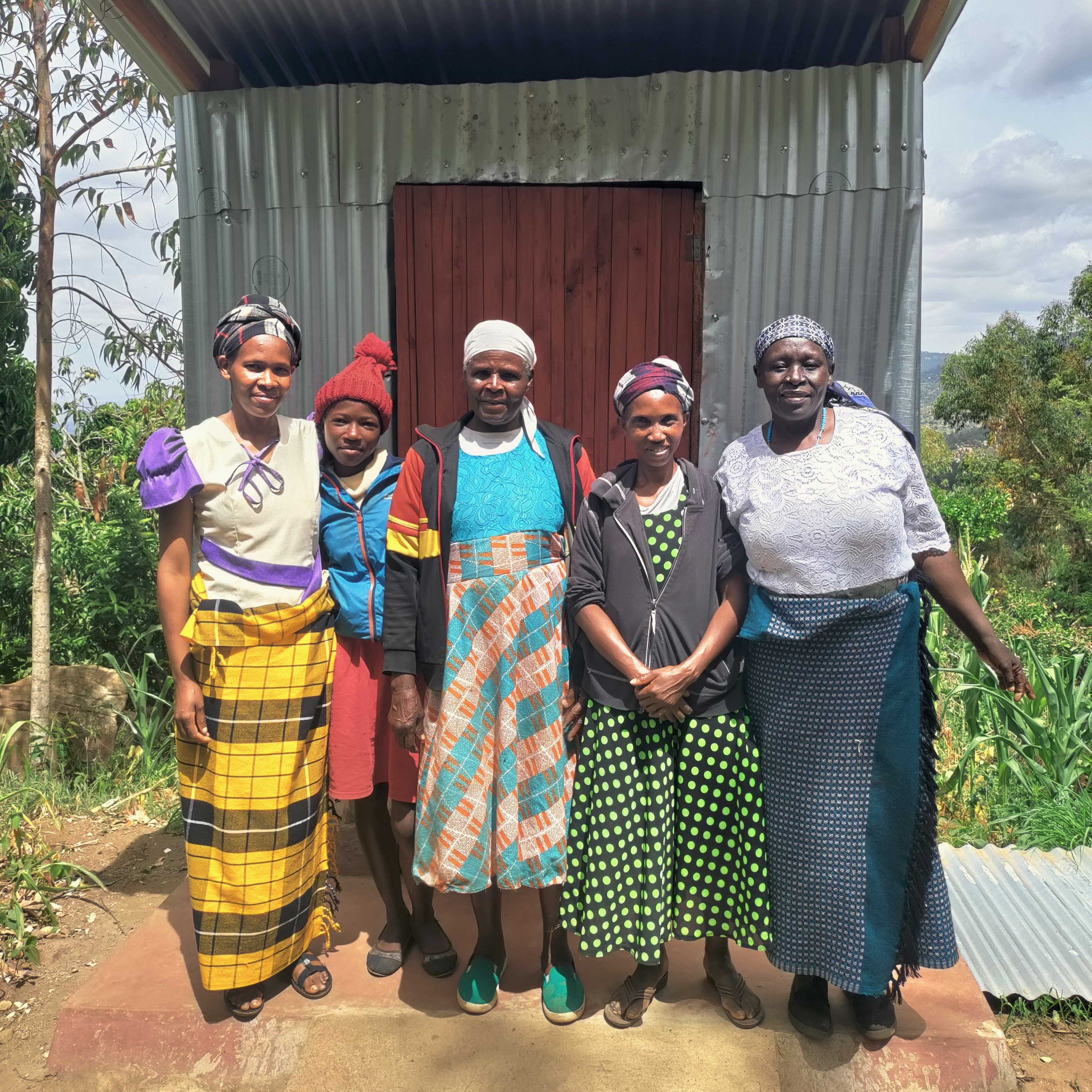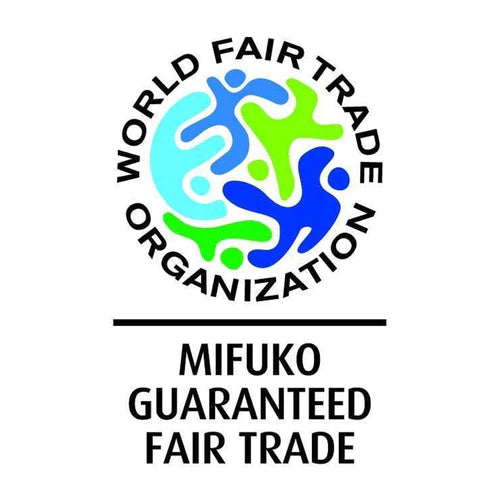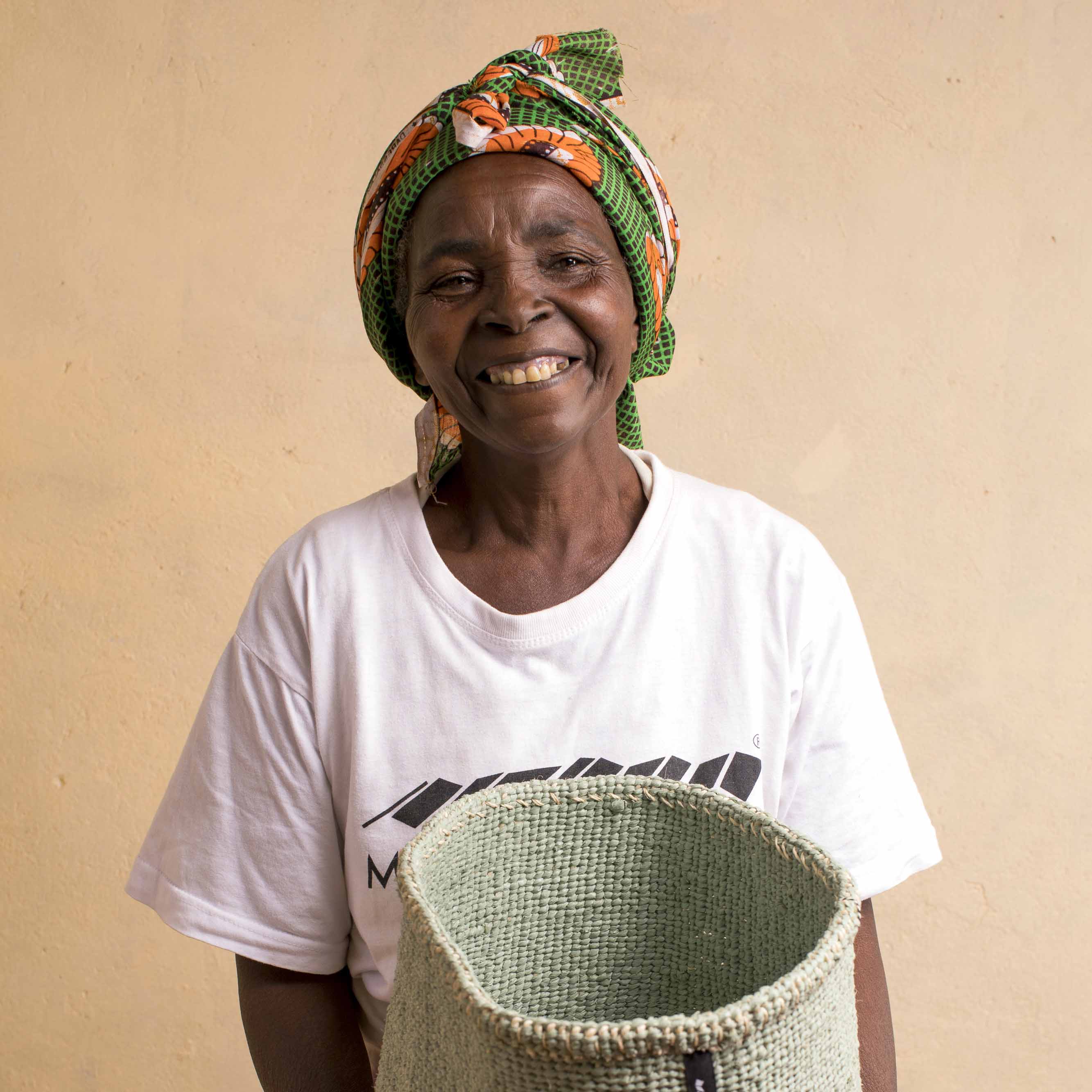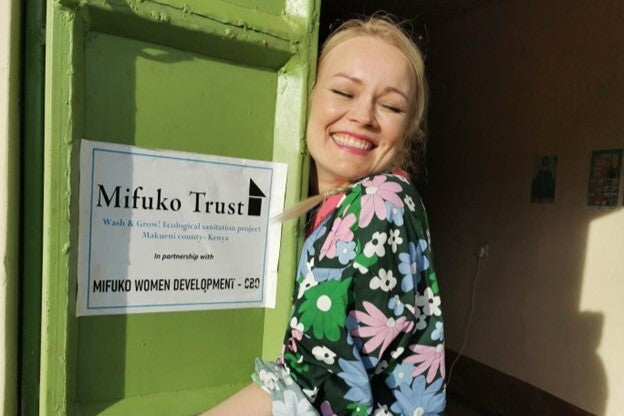My journey with Mifuko started quite interestingly in 2009.
Minna shared the contacts of a lady she met who weaved baskets and asked if we could find her so she could make a few baskets for us. I called the contact only to find the lady came from an area near my upcountry home. Her name was Esther Ndunge, but we all knew her as Mama Kasee. So, Minna, Mari and I arranged to meet up with her.
We were not familiar with her exact location so on our way we asked some ladies if they knew Mama Kasee and they lied that it was them we were coming to meet because they saw Minna and Mari and were curious about the purpose of our visit.
While talking to them Mama Kasee walked up to us and that’s how we all finally met her. We went to her home where she had gathered a few more artisans and we had a chat about what we wanted and left them a sample of what baskets we’d like from them.
They made good quality baskets, but the color was wrong. We agreed to keep the group and train them to weave the quality of baskets we needed.
We decided to also visit some more ladies in Makueni and started with my mother Teresia Mbuva.
Upon our visit to my mother’s home, we found she had gathered some ladies for us to meet. Most of them didn’t know how to weave but were eager to learn and embark on this kiondo weaving journey. We agreed that they would make a few baskets to assess their skill levels, and confirmed most of them were poor quality. We agreed to train the ladies and Minna and I would visit them weekly to do so. This helped to encourage them to keep working on their weaving skills.
Whatever few good baskets the ladies made, we would ship to Mari in Finland and slowly, we started getting a few small orders.
In 2012, Minna moved back to Finland, and I felt increased pressure and responsibility to make our dream a reality. I took it upon myself to find more artisans and Minna, Mari and I agreed to keep communicating about how to build Mifuko. They would send me samples and orders that I would then share with the artisans, who at the time numbered less than 100. The ladies would weave the orders and we would ship them to Finland. Eventually as the orders became bigger and bigger, my mother and I increased our efforts to find more artisans so that we would be able to increase basket production. The ladies around Kikima willingly joined our existing small group of artisans. There were so many now that we agreed to divide the group into smaller groups of about 15-20 artisans to help us stay organized and distribute orders fairly.
The orders continued to grow, and Minna then wanted some traditional baskets made. As I was researching, I saw some ladies in Gikomba (a local market in Nairobi) who were selling traditional baskets and upon interacting with them I realized some of them were from Makueni, Tawa village which is the general area I am from. I checked the quality of their baskets, and some of the best ones were woven by a lady called Jane Mutala. I bought some baskets from her and left a sample order of small and extra small baskets for her to weave. When Jane brought back the samples she had woven, they were so good that I asked her to find other equally skilled artisans to make baskets for us. I shared an order with the group she put together, and the baskets were good. So, when Minna and Mari visited Kenya, we went to meet Janes group.
As time went on, I encountered a new challenge. The ladies had difficulty understanding the designs that Minna and Mari were requesting to be made but we knew that if we persisted with training them, they would learn. At the time, I lived in Nairobi and would commute to visit the groups in Makueni where I often spent a few days in Kikima to make sure the ladies were following our guidelines and weaving the baskets correctly.
At that time, we were producing handle free baskets, but Minna decided to try attaching some leather handles to a few baskets. They looked so beautiful that we decided to recruit a team of ladies whose job would be to check basket quality, and a small team of men to prepare and attach the leather handles.
By 2015, we were getting so many orders that it became a challenge for me to manage the orders while living in Nairobi. The artisans were in Makueni and transporting the baskets from Makueni to Nairobi so I could prepare them for shipping was so hectic that we agreed that my family and I would move to Machakos, a town between Makueni and Nairobi, to make things easier. My children were already in good schools, and it was a challenge to find new equally good schools in the new town we moved to, but we slowly adapted. Ultimately everything worked out well.
We also diversified our product collection to include backpacks, sandals, aluminum products, wooden ornaments and ceramic and soapstone products, some of which we have since discontinued.
And that is how the story of Mifuko started in 2009! To date, we have gathered over 1,300 artisans in Makueni, Machakos and Kitui because progressively more ladies heard about the Mifuko groups and joined them.


